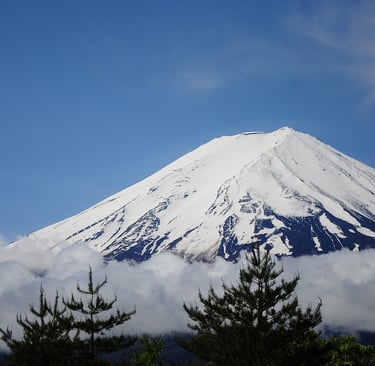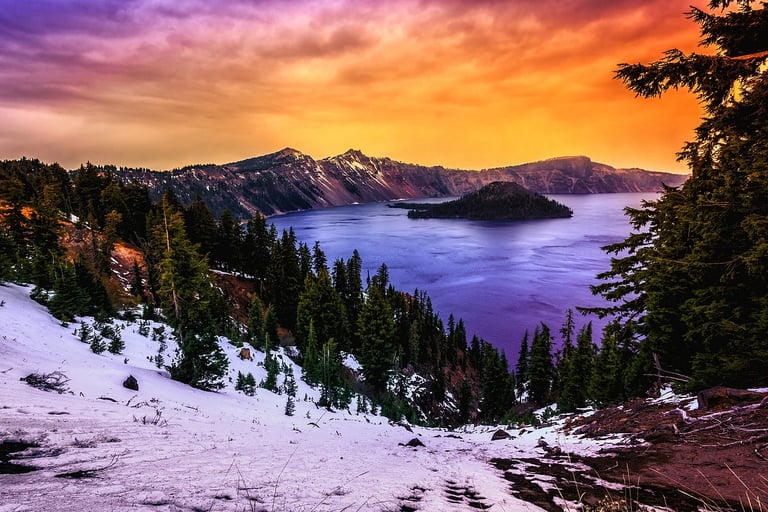Craters and Calderas: Nature’s Profound Signatures of Catastrophe and Creation
Step into a world shaped by cosmic strikes and volcanic fury—explore the secrets of craters and calderas, where every scar tells a story of Earth’s power, resilience, and transformation.
GEOVISTA


The Earth tells its stories in many voices, but few are as dramatic as the scars left upon its surface—marks of destruction that paradoxically give rise to new landscapes and ecosystems. Among these are craters and calderas, two features born of immense energy and transformation. Though they may seem similar at first glance, they are profoundly different, each bearing the imprint of unique forces. Understanding these formations is to glimpse the raw power of geological processes, the chaos of meteorite collisions, and the unrelenting pulse of volcanic activity.
Crater: The Imprint of Explosive Energy
A crater is a bowl-shaped depression, modest in scale but dramatic in formation. It forms when a powerful event—whether a volcanic eruption, an extraterrestrial impact, or a violent explosion—creates a cavity in the Earth’s surface. Though often small, these features hold the echoes of their violent origins and provide vital clues about the processes that shaped them.
How Do Craters Form?
Volcanic Craters: Volcanic craters are born at the summit of volcanoes, where magma, ash, and gases erupt explosively or ooze forth in lava flows. The vent through which the magma escapes creates a hollow space that collapses, leaving a shallow depression. Over time, the crater may grow or evolve, sometimes forming lakes or fumaroles.
Example: Mount Fuji’s summit crater in Japan, a silent witness to the volcano’s fiery history.
Impact Craters: When a meteorite, asteroid, or comet slams into Earth, the force of the collision releases energy equivalent to thousands of nuclear bombs. The surface compresses and rebounds, ejecting debris and forming a circular depression often surrounded by raised rims or central peaks.
Example: The Barringer Crater (Meteor Crater) in Arizona, USA—a pristine reminder of the celestial violence that shaped our planet.
Explosion Craters: These result from localized explosions, such as gas eruptions or human-induced blasts. While smaller and less dramatic than their volcanic or impact counterparts, they are nonetheless striking reminders of energy unleashed.
Example: Craters from World War II bombings, still visible in parts of Europe.
Characteristics of Craters:
Size: Typically small (a few meters to ~1 km in diameter).
Shape: Circular, with sharp, well-defined edges.
Formation Process: Sudden, high-energy events.
Features: Often contain steep sides and occasionally central peaks (impact craters) or volcanic activity.
Caldera: The Collapsed Majesty of Supervolcanoes
A caldera is a vast, basin-like depression formed when the magma chamber beneath a volcano is emptied during an eruption, causing the land above to collapse under its own weight. Unlike craters, calderas are immense, often spanning several kilometres, and are the result of cataclysmic volcanic events capable of reshaping continents and altering climates.
How Do Calderas Form?
Magma Drainage and Collapse: A caldera forms when a volcanic eruption is so powerful that the magma chamber below is largely or completely emptied. Without the support of the magma, the ground above caves in, creating a vast depression.
Post-Formation Features: Over time, calderas may fill with water, forming tranquil lakes, or experience renewed volcanic activity, building smaller cones within the caldera itself.
Example: Crater Lake in Oregon, USA, is actually a caldera, its serene waters concealing the violent history of Mount Mazama’s eruption.
Resurgence and Volcanic Activity: Some calderas show signs of resurgence, with magma pushing upward to create domes or new eruptions.
Example: Yellowstone Caldera in the USA, a supervolcano whose eruptions have altered global climates.
Characteristics of Calderas:
Size: Enormous, often spanning 10–100 kilometers in diameter.
Shape: Irregular, with steep walls and uneven floors.
Formation Process: Gradual collapse following massive magma chamber depletion.
Features: Hydrothermal activity, resurgent domes, and secondary cones.
Crater vs. Caldera: The Defining Distinctions
Craters and calderas, though both products of Earth's powerful natural processes, differ profoundly in their characteristics.
Size: Craters are typically smaller, ranging from just a few meters to about one kilometer in diameter. In contrast, calderas are colossal, often spanning several kilometers wide, dominating the landscape they inhabit.
Formation Process: Craters result from localized events such as volcanic eruptions or the impact of celestial objects like meteorites. Calderas, however, are born from the catastrophic collapse of a volcano following the depletion of its magma chamber during a massive eruption.
Associated Events: Craters often accompany moderate volcanic activity or meteorite impacts, marking the Earth with their sharp, distinct edges. Calderas, on the other hand, are the remnants of supervolcanic eruptions, events so immense they can alter global climates and reshape ecosystems.
Shape: Craters are usually circular and shallow, often perched atop volcanic cones or etched into the Earth by impact. Calderas, by contrast, are irregular in shape, with steep walls and vast, deep depressions that may hold lakes, geothermal features, or even secondary volcanic activity.
Notable Examples: Iconic craters include Mount Fuji’s summit crater and the Barringer Crater in Arizona, both striking in their simplicity and scale. Famous calderas like Yellowstone in the United States and Crater Lake in Oregon reveal the dramatic aftermath of Earth’s most explosive forces.
The Geological and Ecological Impact
Scientific Importance:
Craters, especially impact craters, reveal Earth’s history of celestial bombardment and the forces that shaped its surface.
Calderas, on the other hand, hold clues about supervolcanic eruptions and their role in shaping ecosystems and climate.
Hazards and Monitoring:
Active volcanic craters are closely monitored for signs of eruption, while calderas like Yellowstone are watched for potential global-impact events.
Tourism and Exploration:
Craters and calderas are magnets for geologists, adventurers, and tourists. From the eerie serenity of Crater Lake to the steaming geysers of Yellowstone, they offer a glimpse into Earth’s fiery heart.
Craters and calderas are more than geological depressions; they are windows into the Earth’s most dramatic processes. Where craters whisper of meteoric collisions or volcanic sighs, calderas roar with the memory of eruptions that shaped landscapes and rewrote climates. They are the scars and the stories of a restless planet—a testament to its power, beauty, and its eternal transformation.
Subhalakshmi Buragohain
Hyderabad
A large crater in the middle of a mountain.


The snow-kissed crater of Mount Fuji: A delicate contrast between nature’s rage and its calm.
Crater Lake, Oregon: Where a fiery past gave rise to a serene blue sanctuary.


